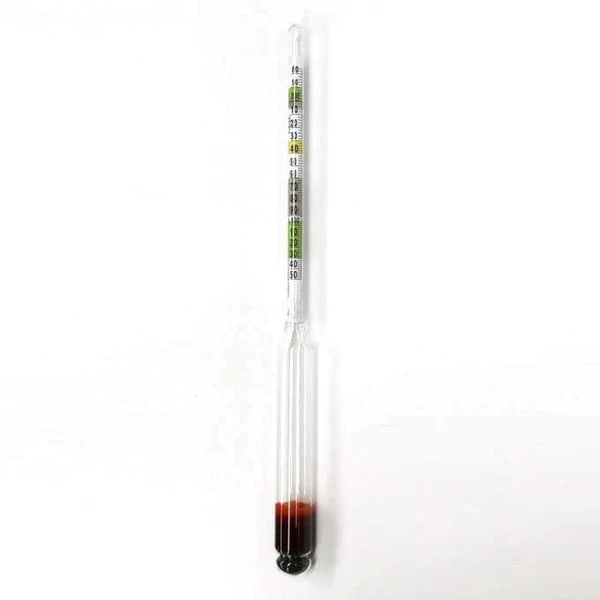Taking Gravity Readings
Gravity - more than an attractive force?
As home brewers we take gravity readings for a number of reasons:
To check our pre- and post-boil gravity - to see how close we are to our expected numbers and what our mash and brewhouse efficiencies are like.
Prior to fermentation to estimate the amount of alcohol that could potentially be produced.
After fermentation to calculate the actual amount of alcohol in the beer.
All of this relies on accurate readings being taken. In this blog post we'll look at the two most basic tools - the hydrometer and refractometer.
“Too much gravity argues a shallow mind.”
WhileLavater may not have been referring to specific gravity, it applies just as well. High gravity beers can pickle the mind.
It’s important to know the gravity of your wort because that will affect how much alcohol is produced, how long it will take to ferment, whether or not it is likely to “get stuck”, the sweetness/dryness of the beer and a myriad other factors.
When it comes to measuring the specific gravity of a beer to wort, there are two main tools we can use: the hydrometer and the refractometer. they do the same thing - but in very different ways.
terms used:
specific gravity - sometimes referred to as relative density, is a measure of the density of a substance in comparison to the density of water.
Hydrometer
The hydrometer is a sealed glass tube that is calibrated to float at different heights in liquids to measure their specific gravity. Water has a specific gravity of 1.000. Because we are extracting sugars from grains into our wort, we increase the density of the water. The specific gravity of sea water is 1.026. Beer wort can vary from 1.030 through to 1.100+, depending on the style and desired final ABV.
The more sugar there is in wort, the more potential alcohol can be produced. There are, however, practical limits, such as drinkability and yeast tolerance.
Before we start fermentation we can take an OG reading (original gravity) to see how much sugar we have converted. At the end of fermentation we take an FG reading (final gravity) to see how much sugar is left. Then we use a calculator to estimate the amount of alcohol in the beer. I say estimate, because this method is still an approximation - pretty accurate, probably within 0.1-0.2% ABV in most cases. that’s good enough for home brewing.
When you are taking a reading, make sure the measuring cylinder is level with your eye, and you read from the bottom of the meniscus. You could get a 1-2 point variation if you read from the top of the meniscus.
Refractometer
Refractometers work by measuring the light as it passes through the liquid. The denser the liquid, the more the light refracts.
From time to time you should test your refractometer. Do this by putting distilled water on the slide and making sure it reads 1.000. You should use distilled water, because tap water isn’t pure water. It can contain chlorine, fluoride and other dissolved minerals. If it doesn’t read 1.000 then you can adjust it with a jewellers screwdriver (phillips). remove the small cap on the top of the refractometer and turn the screw until the refractometer reads 1.000. Once you have done this you can also take a reading of wort or sugar water and compare it to a hydrometer reading.
To take a refractometer reading, first lift the slide cover and cover the slide with the liquid to be tested, then push the slide down and remove any bubbles between the slide and cover. Place the eyepiece up to your eye (if you wear glasses remove them first) and adjust the focus ring. take a reading from the SG or Wort scale.
The reading in this picture is 1.055.
REMEMBER: you cannot use a refractometer once fermentation has started. You will have to use a hydrometer for your FG reading.
Tips
Get yourself a 100ml measuring cylinder to take your hydrometer readings in. I originally bought a 250ml cylinder and takes way too much wort to fill. A 100ml cylinder will do just nicely.
Get a reusable pipette or a small syringe for your refractometer, as it only takes a few drops.
Make sure everything is clean and sanitised - that way you don’t have to worry about infections or waste your wort/beer. Remember, if everything is sanitised, it is safe to tip the wort back into the fermenter after testing.
Hydrometers and Refractometers are calibrated at a given temperature - usually 20ºC or 22ºC. Let your wort cool down before measuring it.




